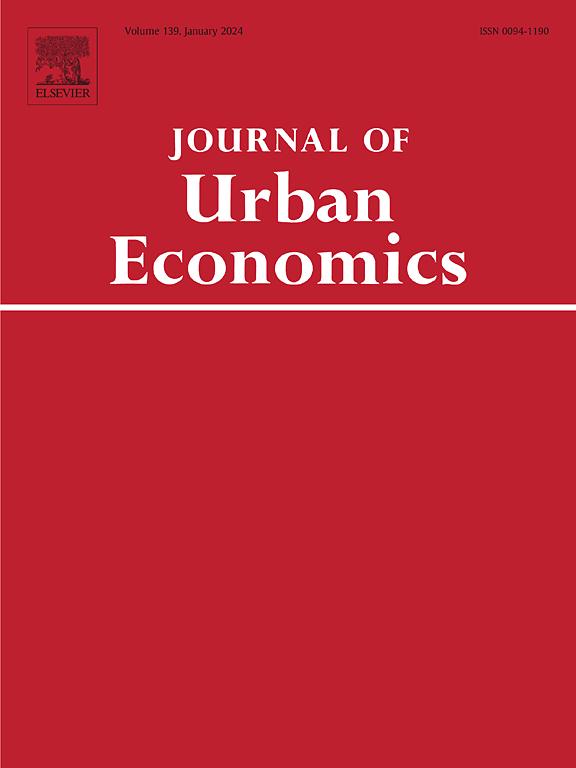城市中的死亡、破坏和增长:1918年流感后的创业资本和经济地理
IF 4.8
1区 经济学
Q1 ECONOMICS
引用次数: 0
摘要
城市发展如何应对灾难?我提出了一种模式,在这种模式下,本地企业家在开办本地企业方面具有比较优势,而企业创建则从商业活动中受益。该模型预测,城市在当地人力资本减少后会陷入停滞,但与有关城市韧性的既定事实一致,在当地物质资本遭到破坏后,城市会复苏。我以1918年流感大流行后的美国城市人口为样本,对人力资本冲击的预测影响进行了测试。在美国最大的几个城市中,流感大流行导致0.5%的居民死亡。我将流感发病率与疫情高峰期当地天气联系起来,发现流感死亡率高的城市人口水平和增长率一直很低,据估计,流感发病率每增加10%,2010年人口就会减少13%。本文章由计算机程序翻译,如有差异,请以英文原文为准。
Death, destruction, and growth in cities: Entrepreneurial capital and economic geography after the 1918 influenza
How does city growth respond to catastrophe? I propose a model in which local entrepreneurs have a comparative advantage in starting local businesses and business creation benefits from business activity. The model predicts that cities stagnate following a reduction in local human capital but, consistent with established facts about city resilience, recover after the destruction of local physical capital. I test for the predicted effects of a shock to human capital using U.S. city populations after the 1918 Influenza Pandemic, which killed 0.5% of residents in the largest U.S. cities. Instrumenting for Flu incidence with local weather at the peak of the epidemic, I show that cities with high influenza mortality had persistently low population levels and growth rates, with estimates implying that a 10% increase in Flu incidence caused a 13% reduction in 2010 population.
求助全文
通过发布文献求助,成功后即可免费获取论文全文。
去求助
来源期刊

Journal of Urban Economics
Multiple-
CiteScore
10.60
自引率
4.80%
发文量
64
期刊介绍:
The Journal of Urban Economics provides a focal point for the publication of research papers in the rapidly expanding field of urban economics. It publishes papers of great scholarly merit on a wide range of topics and employing a wide range of approaches to urban economics. The Journal welcomes papers that are theoretical or empirical, positive or normative. Although the Journal is not intended to be multidisciplinary, papers by noneconomists are welcome if they are of interest to economists. Brief Notes are also published if they lie within the purview of the Journal and if they contain new information, comment on published work, or new theoretical suggestions.
 求助内容:
求助内容: 应助结果提醒方式:
应助结果提醒方式:


